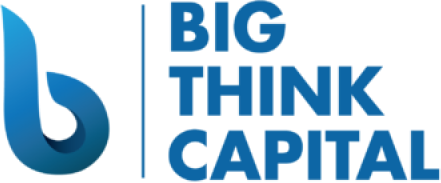Demystifying SBA Loans: Decision-making Factors and How to Leverage the Federal Reserve’s Latest Interest Rate Cut for Small Business Funding
Estimated reading time: 5 minutes
- Understanding the different types of SBA loans available
- The impact of recent Federal Reserve interest rate cuts on borrowing costs
- Key decision-making factors to consider before applying for an SBA loan
- Practical takeaways for optimizing your funding strategy
Table of Contents
- Understanding SBA Loans
- Recent Federal Reserve Interest Rate Cuts: What You Need to Know
- Key Decision-Making Factors for SBA Loans
- Practical Takeaways for Business Owners
- Overcoming Common Impressions of SBA Loans
- Conclusion
- FAQ
Understanding SBA Loans
SBA loans are government-backed loans that help small businesses access financing with favorable terms. Offered through various lending institutions and guaranteed by the SBA, these loans typically provide larger amounts, longer repayment terms, and lower interest rates compared to conventional loans.
Types of SBA Loans
- SBA 7(a) Loan: This is the most common type of SBA loan, designed for a wide range of business purposes, including working capital, equipment purchases, and debt refinancing.
- SBA 504 Loan: Focused on fixed asset acquisitions, this loan type is ideal for purchasing real estate or expensive equipment.
- SBA Microloans: These are smaller loans, generally up to $50,000, aimed at supporting startups and microenterprises.
Why SBA Loans are Worth Considering
One of the biggest advantages of SBA loans is their accessibility to small businesses that may struggle to qualify for traditional financing. With the backing of the federal government, lenders are more willing to take a risk on businesses with less-than-perfect credit. Current interest rates also play a significant role in making these loans appealing.
Recent Federal Reserve Interest Rate Cuts: What You Need to Know
As of late 2023, the Federal Reserve has initiated interest rate cuts to stimulate the economy. This move is particularly significant for small business owners contemplating financing options. Lower interest rates can reduce the overall cost of borrowing, making it more feasible for business owners to invest in growth opportunities.
The Impact of Interest Rates on SBA Loans
When the Fed lowers interest rates, the direct result is a decrease in lending rates, which can lead to:
- Lower monthly payments: As interest rates drop, so do payments, enabling businesses to allocate funds toward growth rather than interest.
- Greater borrowing capacity: With lower rates, businesses may qualify for larger loans or borrow the same amount with lower payment obligations.
- Increased appeal of fixed-rate loans: Lower rates may push borrowers toward fixed-rate SBA loans, providing long-term cost certainty.
Understanding how these changes in interest rates work can help business owners make informed decisions regarding their financing strategies.
Key Decision-Making Factors for SBA Loans
When considering an SBA loan, several factors can influence your decision. Here are some critical considerations:
1. Eligibility Requirements
Before applying for an SBA loan, ensure that you meet the necessary eligibility criteria. Typically, borrowers must:
- Operate a for-profit business.
- Have a tangible business location in the U.S.
- Demonstrate a need for business funds for a valid purpose.
- Meet specific credit and financial standards.
2. Loan Purpose
Clearly define how you intend to use the funds. Is it for expansion, equipment, or operational costs? Your loan purpose should align with the applicable loan type to improve your chances of approval.
3. Business Plan
A well-structured business plan can greatly enhance your loan application’s success. Include projections, cash flow analysis, marketing strategies, and a clear overview of how the funds will be utilized and returned.
4. Financial Health
Your business’s financial history will be scrutinized by lenders. Prepare your financial statements, including profit and loss statements, balance sheets, and cash flow statements, to provide a clear picture of your business’s financial health.
5. Timing of Application
Timing can have a significant impact on your funding journey. With the current climate of lower interest rates, there may be a sense of urgency to apply sooner rather than later. Being prepared and having all necessary documentation ready can streamline the process.
Practical Takeaways for Business Owners
- Don’t Miss the Opportunity: Take advantage of the lower interest rates while they last. Monitoring current economic trends will help you make timely decisions about when to apply for funding.
- Engage with Experts: Partnering with professionals, such as those at Big Think Capital, can provide valuable insights tailored to your unique financial situation. We can guide you through the loan process and help you explore the best financing options for your business.
- Develop a Comprehensive Business Plan: A solid business plan not only aids in securing funding but also serves as a roadmap for your business growth. Focus on detailing your business model, market analysis, and financial projections.
Overcoming Common Impressions of SBA Loans
Many business owners may shy away from SBA loans due to misconceptions about their application processes. Here are a few common myths:
- Myth: SBA loans are only for startups. While startups can benefit, established businesses can also leverage this financing to expand operations.
- Myth: The application process is cumbersome. With the right guidance, many find the process straightforward and manageable.
Conclusion
As interest rates continue to fluctuate, business owners should remain vigilant about opportunities for financing and understand how to work within the SBA framework. By considering the decision-making factors outlined above and engaging with financial professionals, you can optimize your chances of securing the funding necessary for growth.
Whether you are looking to expand your business, manage operational costs, or acquire new equipment, SBA loans can be a powerful tool. At Big Think Capital, we are dedicated to helping you navigate the complexities of alternative lending.
To learn more about your funding options and how we can assist you, visit bigthinkcapital.com or speak with a funding expert today. Your business growth begins with the right financial strategy.
FAQ
What are SBA loans?
SBA loans are government-backed loans designed to assist small businesses in securing funding with favorable terms.
What types of SBA loans are available?
The main types of SBA loans are the 7(a) loan, 504 loan, and microloans.
How do interest rates affect SBA loans?
Lower interest rates can reduce the overall cost of borrowing, leading to lower monthly payments and greater borrowing capacity.
What are key factors to consider when applying for SBA loans?
Eligibility requirements, loan purpose, having a solid business plan, understanding financial health, and timing of the application are crucial factors.
Can established businesses apply for SBA loans?
Yes, established businesses can also leverage SBA loans for various financial needs.






